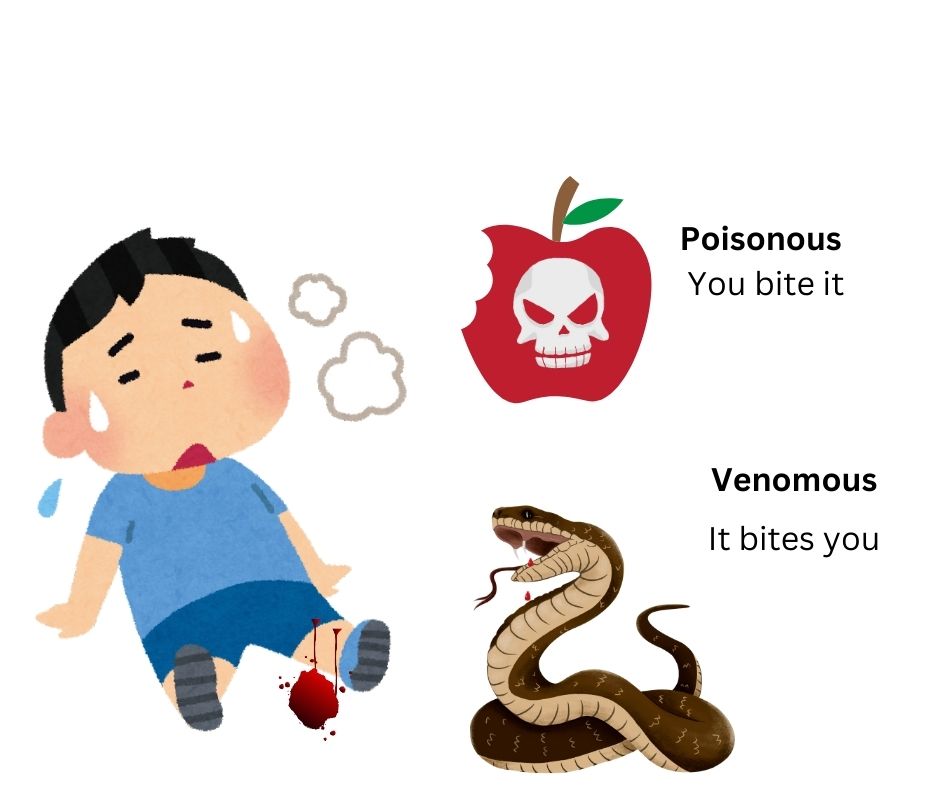
While the words venom and poison may often be used interchangeably, they do in fact mean two different things. Poison and venom are both substances that can be lethal or irritating to organisms when they are encountered. These substances contain toxins that are stored in various organs or structures of the organism. Poison is a substance that can be lethal when ingested, inhaled, or absorbed through skin. Venom is produced by the organism and is then injected into the bloodstream of its prey through a bite or sting.
Even if an animal is venomous, they do not always inject venom when they bite or sting. Venom takes time and energy for the organism to produce so it is beneficial for the venomous organism to use it wisely. Venomous animals will often exhibit “dry bites” that are offered as a warning for offending organisms to stay away.
While poisonous organisms cannot control the amount of poison delivered since they do not inject it, they do often display warning colors such as bright red, orange, yellow, and blue (known as aposematism) that act as a warning to potential predators. Since poison can be held and secreted through structures on the organism’s body, it is important to wear proper protection when interacting with them.
Here in Florida, we have a variety of venomous and poisonous plants and animals. We have venomous snakes, spiders, insects, fish and poisonous toads and plants. When you encounter an organism that is venomous or poisonous, it is important to keep your distance and do not interact with organisms if possible. If you do need to remove the organism, take proper precautions, or call a professional. If you are bitten by a venomous snake or spider or have a negative reaction to a poison, remain calm and seek medical attention ASAP.